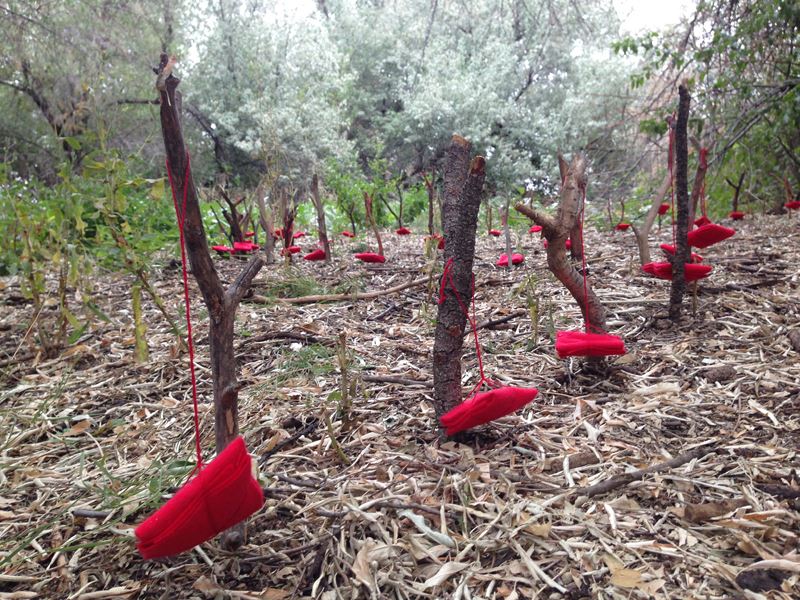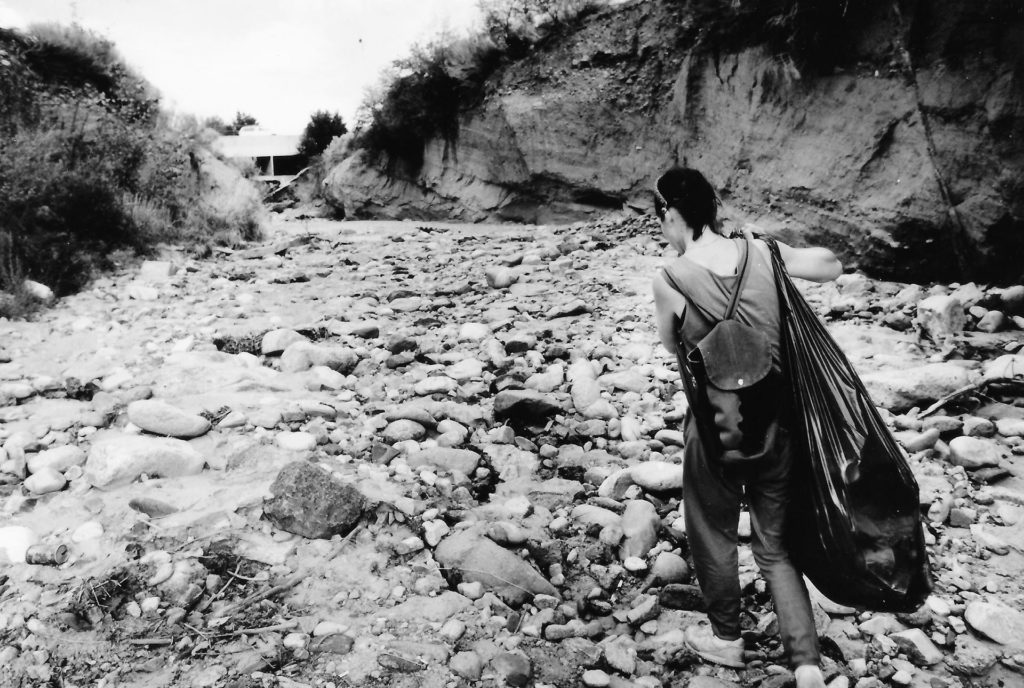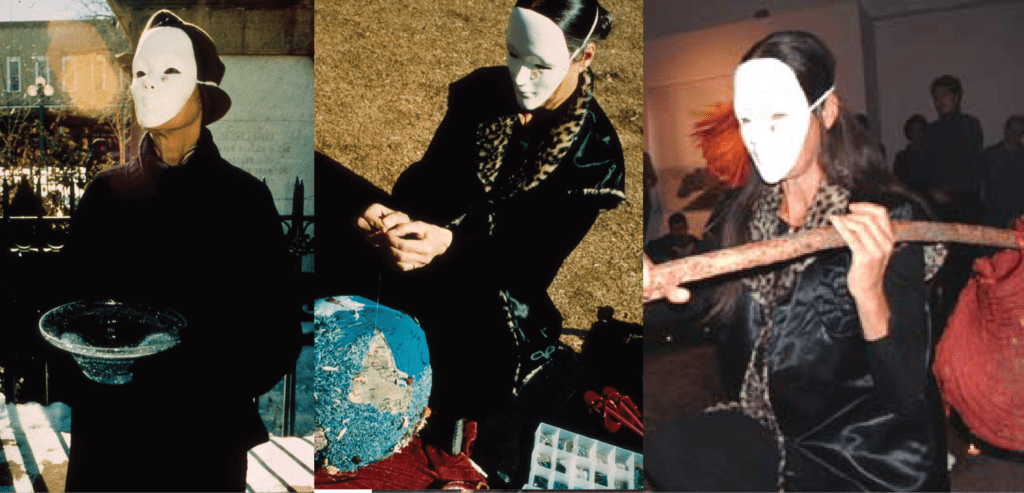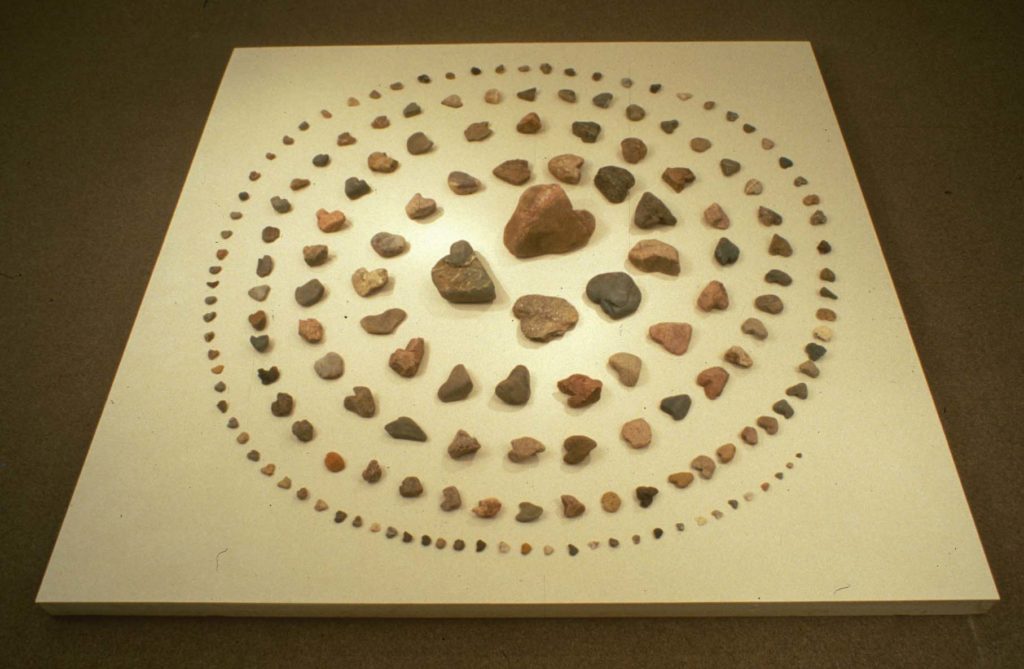Location: Santa Fe NM
EDITOR’S NOTE:
This essay is a collage of collected writings by the artist for her website and blog.

I. BEGINNINGS
MY PERFORMANCES AND INSTALLATIONS are prayers. My passion is the Earth, and my identity belongs to Spirit. The word heartist reflects the gift of listening to Nature. The term results from my quest for the spiritual in art, begun in 1979. Heartist is a word unifying life and art and suggests a way of being in these transformational times.
My calling is to un-differentiate life and art, which to me is a mark of the re-enlivening of spirit. It does not matter if I get credit for an action or ‘work’ as long as it benefits my beloved Earth.

II. THE IMPORTANCE OF ART IN CHALLENGING TIMES
THE CRISIS OF HUMANITY is multi-level, economic, social, political.
Conceptual theories about art are no longer sufficient. What has been missing from contemporary discourse is that art is the expression of spirit. Spirit makes us reach beyond ourselves toward something greater. In a fragmented world wrecked by war and hatred, spirit implies oneness, non-separation, interconnectedness. It resides in the heart. As our world falls apart and our hearts break open, spirit guides us to make art that relates deeply to a world in hurt.
We, artists, the-perceivers-of-WHAT-IS that we are, are naturally going to respond to the situation. There will be a reuniting of what we have separated, art and life, but also art and spirit, art and science. New forms will result not only through the interfacing of different disciplines but also collaborations between the practitioners within these different fields; artists, scientists, and other specialists (like city officials.) Seeds have been planted since the 60’s with movements like political art and environmental art, but now there’s going to be an explosion of forms of ‘art for life’s sake’ and ‘art for earth’s sake.’ Bertold Brecht said that ‘art is not a mirror held up to reality, but a hammer with which to shape it.’ We still need mirrors held up to reality, but with pressing times upon us, art will become ‘the hammer’ forming deep change.
We will also experience an increase in the genres and forms that art offers. The oneness is the infinity, that is a mark of spirit, the commonality in the diversity. The new times may actually produce more art than we have ever seen before because there will be growing numbers realizing that the old forms of communication have not been working and that the universe is calling us to reach for each other and for the skies.
III. SPIRITUAL IN ART IN OUR TIME
MANY ARTISTS ASK what is ‘the spiritual in art.’ For some it is a quest.
Every person can make a little difference to the turmoil Nature is going through. My life stories of heart are particular to me, but perhaps they will inspire you to find a way to join together and help our world rebalance.
What is spiritual in art in our time? This is a question that has been burning in my heart since 1979. A few years later, it was my heart again, (a broken heart this time,) that turned me into an artist. I could no longer bear what was happening to the Earth. From my despair came the revelation that my form as an artist would be ritual.
The spiritual today is action-oriented. Some may call it service, which is an intrinsic part of a spiritual path. Artists may not put it in this way, but the heart, speaking in no uncertain terms, seeks a place to express compassion. Kandinsky’s ‘inner need’ of one hundred years ago may well be changing into a seed to find the self through service. It may be that art’s inherent quality of unifying and healing is only now to be revealed.
Humanity is reaching a ‘great turning’ by realizing the devastation it has caused to the Earth. Before we lose her, (or we are lost to her,) we are being forced to wake up
In T.S. Eliot’s words, we are ‘to go back to the beginning/And know the place for the first time.’ What growing numbers are coming (back) to is that spirit is synonymous with Earth.
We are finally understanding the indigenous intrinsic ways of oneness with the Earth. ‘The Earth and myself are of one mind,’ said Indian leader Chief Joseph. (1) In northern New Mexico, where I live, a statement in the Pojoaque Pueblo Poeh Center contains a profound truth: ‘Our ancestors’ guide for living was to use the natural world as a model for structuring their world, the Tewa world.’
With the environmental crisis so much more blatant and acute, it is perhaps not far-fetched to conclude that the spiritual in art today may be the work of reconnection with and the healing of our relationship with the Earth. An art movement that concerns itself with Earth has been emerging since the sixties.

This new voice for art is not only about recognizing the oneness of community, be it human, animal, plant, mineral, or all, but also about participating in creating it. In what is referred to as ecological art,’a worldwide art movement that is encouraging the fusion of culture with environmental stewardship,’ artists are creating community often by mobilizing it. It’s about ‘the artist act (ing) as aesthetic choreographer of collaborative action as well as premier danseur.’ (2) Just by itself the movement, which is leaderless, is a wide field from land art to ecological art.
To work with the spiritual in art today is to work consciously toward establishing ‘the reciprocal connection between humans and the more-than-human world.’ (3)
Once, there was no separation between spirit and art. Prior to Kandinsky’s…seminal 1912 essay ‘Concerning the Spiritual in Art'(1)….the world had not seen the relationship between art and spirit as a subject for intellectual discussion. The essay revolutionized art. A century later, we are posing the same question in light of our times… our answer growing out of today’s need is for humans to see themselves as part of a larger whole.
I am a seeker whose question about the spiritual in art in our time came from a deep personal quest. This journey compels me to send forth a cri du coeur. We must act as artists in service to the Earth.
The Chinese word for crisis is made up of two characters, ‘danger’ and ‘opportunity.’ Now is the time and opportunity for new beginnings. Standing still and feeling the entrapment of despair or denial, we recognize our longing for a different world, a better world. We are forced to take a deep look at everything, outside of us, but also inside of us. Along with our personal longing, we will recognize with author Marilyn Ferguson that ‘there’s a paradigm shift in art from a deeply suffering approach to one that values healing’.
The role of art and the role of healing are the same: make whole. The artists’ task is to discover that wholeness in themselves and to communicate their discovery. Art and life will no longer be separated. Art transcends our ordinary lives and lets us imagine what is possible.
(1) Quoted in Jose A. Arguelles, The Transformative Vision: Reflections on the Nature and History of Human Expression, Berkeley: Shambala Press, 1975. p.294
(2) Marie Jo Aagerstoun, PhD
(3) The term ‘more-than-human world,’ coined by the eco-philosopher David Abram, denotes ‘Nature’ while pointedly including human beings within what people call ‘nature.
WEAD MAGAZINE ISSUE No. 13, THE ART OF EMPATHY
Published November 2022

